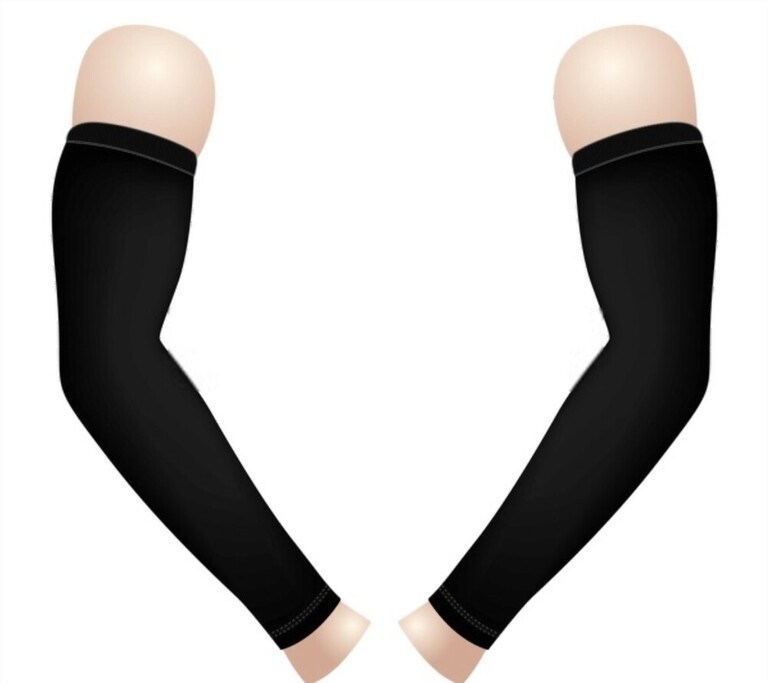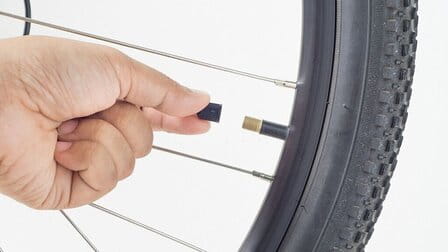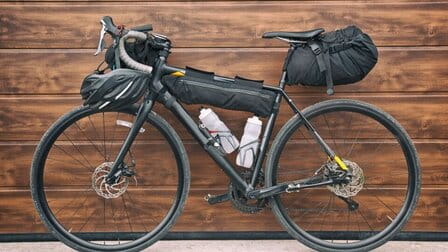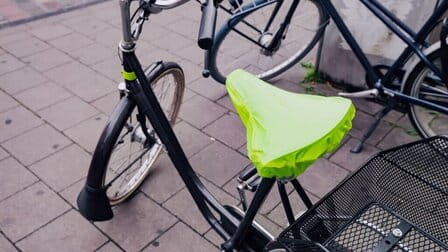The weather is fickle, and the temperature swings from morning to night may make it appear as though you need two separate bicycle cabinets. This is particularly challenging if you are traveling to and from work or on long journeys that begin in the cool of the morning.
Hand, foot, and knee warmers are an easy solution. Here are some benefits of arm warmers for cycling that you should know:
1. Benefits of Arm Warmers for Cycling
Bicycle arm warmers are cloth tubes that should cover the whole length of your arm, from practically your wrist to your shoulder. Arm warmers come in a variety of styles, depending on the fabric:
- Summer arm sleeves: Synthetic clothes with little or no heat protection and an extremely tight cut. The main aim of this kind is to protect our arms from UV rays.
- Thermal arm warmers: This category has a broad variety of models and choices to suit riders' demands. They're often composed of more technical materials, which can be synthetic (polyamide, spandex, Lycra...), natural (merino wool), or a combination of both. Fleece linings keep your arms toasty in models with higher heat protection.
- Water-repellent arm warmers: These items include a surface covering that makes them waterproof in addition to providing heat protection. They will keep you dry in the rain, but only to a point because no arm warmer is fully waterproof. Use a waterproof jacket if it's going to rain a lot.

Benefits of arm warmers for cycling:
- Because they're simple to put on and take off while riding.
- Because they are small and can be carried in the back pockets of your riding jersey or vest, they are ideal.
- Because they provide additional protection from the sun, cold, wind, and rain.
- Because the arms do not move during riding and so get chilly more easily, they assist to regulate your body temperature.
- Because they are compression garments, they aid with healing, pain relief, and muscular tension reduction.
2. When Do You Need Arm Warmers for Cycling

Arm warmers are so versatile that you may take them about and utilize them for extra protection even on the hottest of days. A long day on the bike with the sun beaming down on your arms may be taxing, and you'll become sunburned if you don't wear sun protection while riding.
Arm warmers can be used in the following ways:
- You may wear them in the summer, late spring, and early fall to protect yourself on chilly evenings after work or cold mornings if you leave the house early. Take them off and place them in a bag as soon as they've warmed up. You may also walk outside without an arm warmer and then put it on when you get cold.
- When riding downhill on a route with lengthy passes and slopes where you must use your hands and hands to stop, grasp the handlebars, and maneuver the bike securely, hand warmers and light gloves will come in handy. This is especially true while traveling over high mountain passes.
3. Warming Your Hands While Riding a Bike
Driving with cold hands may be challenging, and your ability to shift gears, stop, or grasp the steering wheel can have an impact on your driving performance and safety. When it gets chilly outside and your core temperature drops, the blood arteries in your hands and feet contract in an attempt to return warm blood to your core. When you combine this decreased blood flow with the chilly wind generated by your front speed and the contact location of your hands on the handlebars, it's no wonder that your fingers can quickly turn to ice. There are additional options for keeping your hands warm than arm warmers.
Ritual before the ride
It's simple to go into a losing streak on your first pedal stroke if you start your ride with chilly hands. Before you leave the house, pre-warm your gloves on a heater, blast the heat inside with a hair dryer, and clip a steaming cup of tea or coffee.
Warm head, warm hands

You can keep your head and ears warm, which will improve your general comfort and, as a result, the comfort of your hands. Under your helmet, wear a skull helmet, a windproof beanie, or a classic Belgian winter cap.
Layer your gloves
When you layer your gloves, you'll have more flexibility if the weather changes while you're out and about, and they'll stay warmer since there's warm air between each layer. Choosing gloves made of Merino wool or thin silk can aid in keeping your body warm.
Double wrap tape

Many riders say that wearing a pair of slings keeps their hands warmer. This is a modest, perhaps even completely psychological technique of warming up. It can help keep vibrations from harsh winter roads at bay by providing extra insulation from the cold metal of the slats.
Move your hands
It will also keep you warm if you move your hands over your bars. This will improve circulation and save a portion of your hand from carrying the weight of all the windbreaks. Squeeze and relax your hands on the bars, shaking them forcefully every now and then.
Eat and drink
It's critical to keep your energy levels up and your water levels down if you want to stay warm. If you run out of fuel, you won't be able to continue the rate of warming; your body will waste more energy attempting to warm you up, and warm blood will be diverted away from your hands.
When it's chilly outside, you may not feel like drinking as much, but if you don't remain hydrated, your speed and ability to stay warm will suffer. Allowing oneself to get dehydrated causes your blood to thicken and circulation to decrease. Use an insulated bottle that can handle hot liquids. Green tea with honey is a great combination.
4. Washing Your Kit and Keeping It Looking New

Cycling gear may be pricey, so you'll want to be sure it lasts as long as it looks and smells. Improper washing, on the other hand, is one of the most harmful things to technical textiles used in cycling apparel. Although the care recommendations on your garments should be followed, here are some simple washing techniques to help you reduce wear, eliminate smells, and keep your clothes looking fresh.
- Hose it down/ pre-rinse
Bring your gear, as well as your bike, shoes, and socks, if you've just done a cross-country race, mud-riding mountain bike, or a muddy wet road trip. When removing your soiled garments, make sure the dirty side is facing out and that socks and knee or arm warmers are removed. Before you wash it, give it a good scrubbing.
- Hang it up
Whether you're going on a rainy or dry vacation, don't go home and throw your gear in the trash while it's still wet. In wet and filthy garments, stains and odor-causing germs rapidly collect. So blow it out even if you don't wash it immediately away. Until you get a chance to wash it, hang it outside or in your laundry room. As a result, the earlier you wash, the better.
- Wash after every use
Chafing and saddle sores can be caused by a filthy chamois. So, do yourself and your riding buddies a favor and wash your gear before you put it on. At the very least, give your kit a whiff before leaving the house.
Conclusion
Arm warmers, in summary, are highly adaptable, easy to put on, take off, and carry, and they allow you to adjust to abrupt variations in temperature as well as the various circumstances of each different cycling path. Are you ready to enjoy your cycling trip with the arm warmers?













